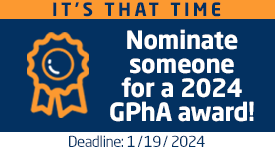Self-releasing insulin, inhaler trouble a-comin’, the drugs that affect driving, and more
02 Jan 2024
Posted by Andrew Kantor
Impending inhaler kerfuffle
GSK’s Flovent is gone, and in its place is GSK’s identical (but non-branded) fluticasone. And that’s gonna be a problem.
Yes, it’s the same medication; only the box has changed. Yet not every insurer that covered Flovent will cover the version without the fancy box.
Insurers get kickbacks from drug makers on branded meds but usually not generics, so they often steer patients toward brand-name drugs. If those insurers aren’t up-to-date on what happened with Flovent, patients could face … let’s call them “coverage hurdles.”
Prepare for a lot of conversations.
Oh, and why is GSK making the switch?
Experts who follow the industry […] point out GSK is making the switch at precisely the time a change in Medicaid rebates could cause the company to have to pay large penalties because of price increases on Flovent over a number of years.
[…]
Or, put another way, it’s the same product without the branding and also without the history of price increases that would leave the medicine vulnerable to such large rebates to Medicaid.
17 days left!
Remember, you only have until January 19 to nominate someone for one of GPhA’s 2024 awards!
Seniors, driving, and drugs
Sure, we’ve all seen the warnings about driving after taking certain types of medication, but when you get down to brass tacks what are the real risks?
Researchers at Washington University’s School of Medicine found out the hard way — with a 10-year study of older folks. They tracked their meds, gave them driving tests, and figured out which drugs really presented the most danger.
Biggest risks: Antidepressants, sleep aids, and to a lesser extent NSAIDs.
Not risky after all: Antihistamines* and anticholinergic meds.
Scary stat: “35% received a failing and marginal road test grade at some point.”
* The newer, non-drowsy kind
Automatic insulin
So you know about insulin pumps — technology that monitors glucose levels and automatically injects insulin as needed. Pretty cool. But what if you could modify the insulin itself to release depending on a person’s (or at least a minipig’s) glucose levels?
That’s just what a team of scientists in China and at UNC have done. In broad strokes, they modified normal insulin with gluconic acid, which in the body reacts with blood and forms a polymer around the insulin molecules. That polymer will then react with blood glucose in such a way that it releases insulin based on glucose levels.
So far it’s been tested on minipigs and mice, where it worked as well as standard insulin injections. More animal tests are planned, then they’re moving on to humans.
Making a new vaccine tech work
Rather than let mRNA vaccines hog the spotlight, there’s another new kind of vaccine technology that could allow the development of targeted, safe, and cheap vaccines.
Where mRNA uses a virus’s messenger RNA to trigger an immune response, these vaccines use protein fragments called epitopes.
The good: They can be made quickly and cheapy, and they’re safe.
The bad: Different people’s immune systems will react differently to proteins, so an epitope might only trigger an immune response in some people.
But now German researchers have found a way to only include the important bits of the protein fragments, so one vaccine can include a whole lot of epitopes and thus work for just about everyone.
[The lead researcher] compares the problem with a chef who needs to create a new dish for a large event: “Some guests have allergies, while others do not like certain ingredients, so the chef needs to select ingredients that as many of the guests as possible can eat and will enjoy.”
Testing the technology on (of course) a SARS-CoV-2 virus, they think “we would be able to reach — and immunise — more than 98% of the world population.”



